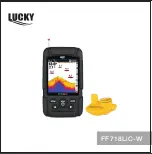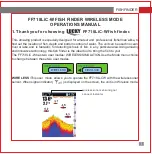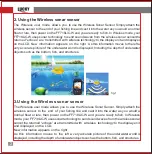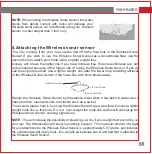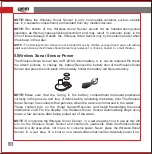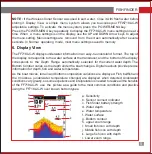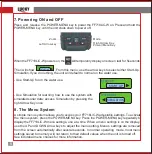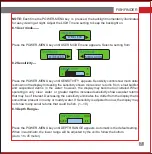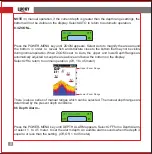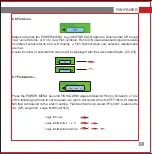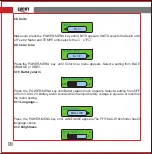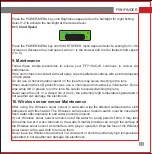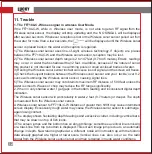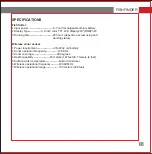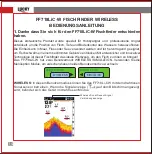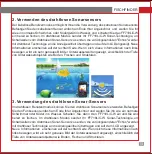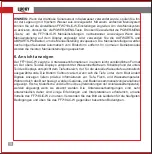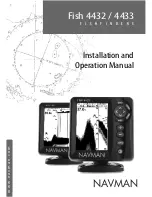
A .
B .
front hole
second hole
antenna tower
3
FISHFINDER
NOTE:
When casting the Wireless Sonar Sensor into water,
shock from abrupt contact with rocks will damage your
Wireless sonar sensor, we recommend using your wireless
sensor in water deeper than 1 foot only.
4.Attaching the Wireless sonar sensor
The line coming from your reel can be tied off to the front hole in the Wireless Sonar
Sensor. If you wish to use the Wireless Sonar Sensor as a conventional float, use the
second hole to attach your hook using a lighter weight line.
A snag will break the lighter line if you have to break free. Slip line techniques are not
recommended because of the higher risk of losing the Wireless Sonar Sensor. If you do
use the slip line method, use a lighter weight line after the lower stop, enabling retrieval
of the Wireless Sonar Sensor if the lower line with hook breaks away.
Handle the Wireless Sonar Sensor by the antenna tower when it has been in water.Use a
heavy test line, standard knots, and tackle such as a swivel.
The second leader hole is for using the Wireless Sonar Sensor as a float. Connect a lighter
weight hook line to this hole. Do not over-weight the hook line as this will submerge the
Wireless Sonar Sensor, causing signal loss.
NOTE :
You will increase the possibility of breaking your line if you use light test pound line on
your reel. The Wireless Sonar Sensor is positively buoyant . The maximum amount of weight
for any attachment to the Wireless Sonar Sensor is approximately 5.67 grams, and includes
the combined weight of any hook, line, weight, swivel/snap swivel and bait that is attached to
the Wireless Sonar Sensor.

